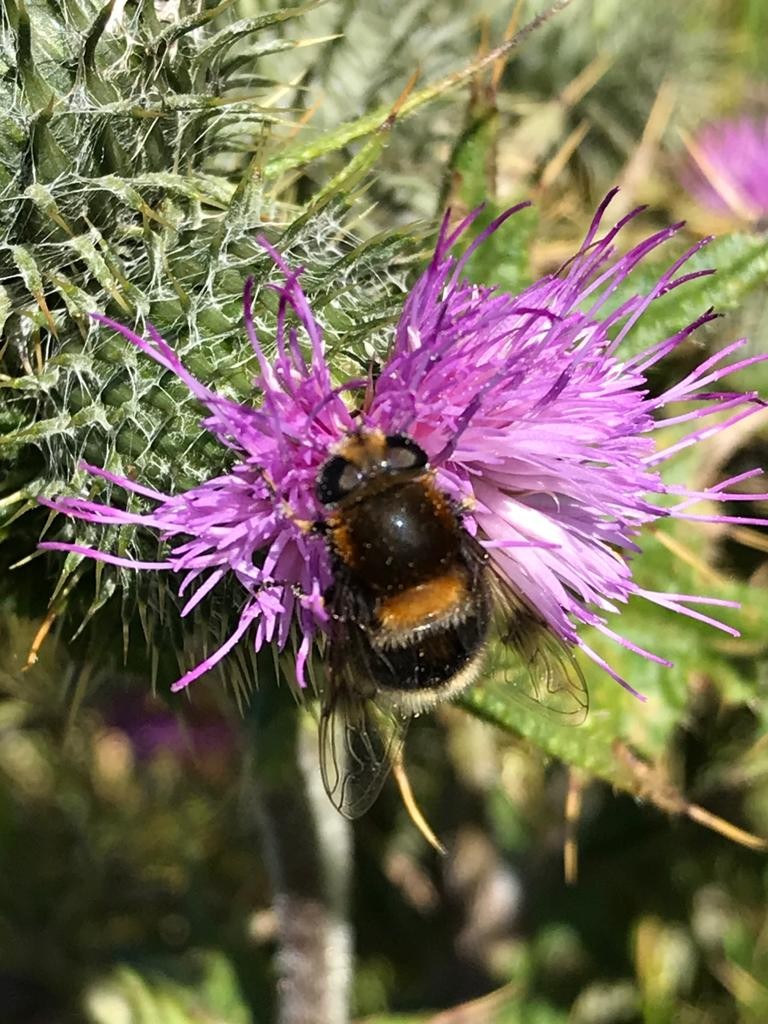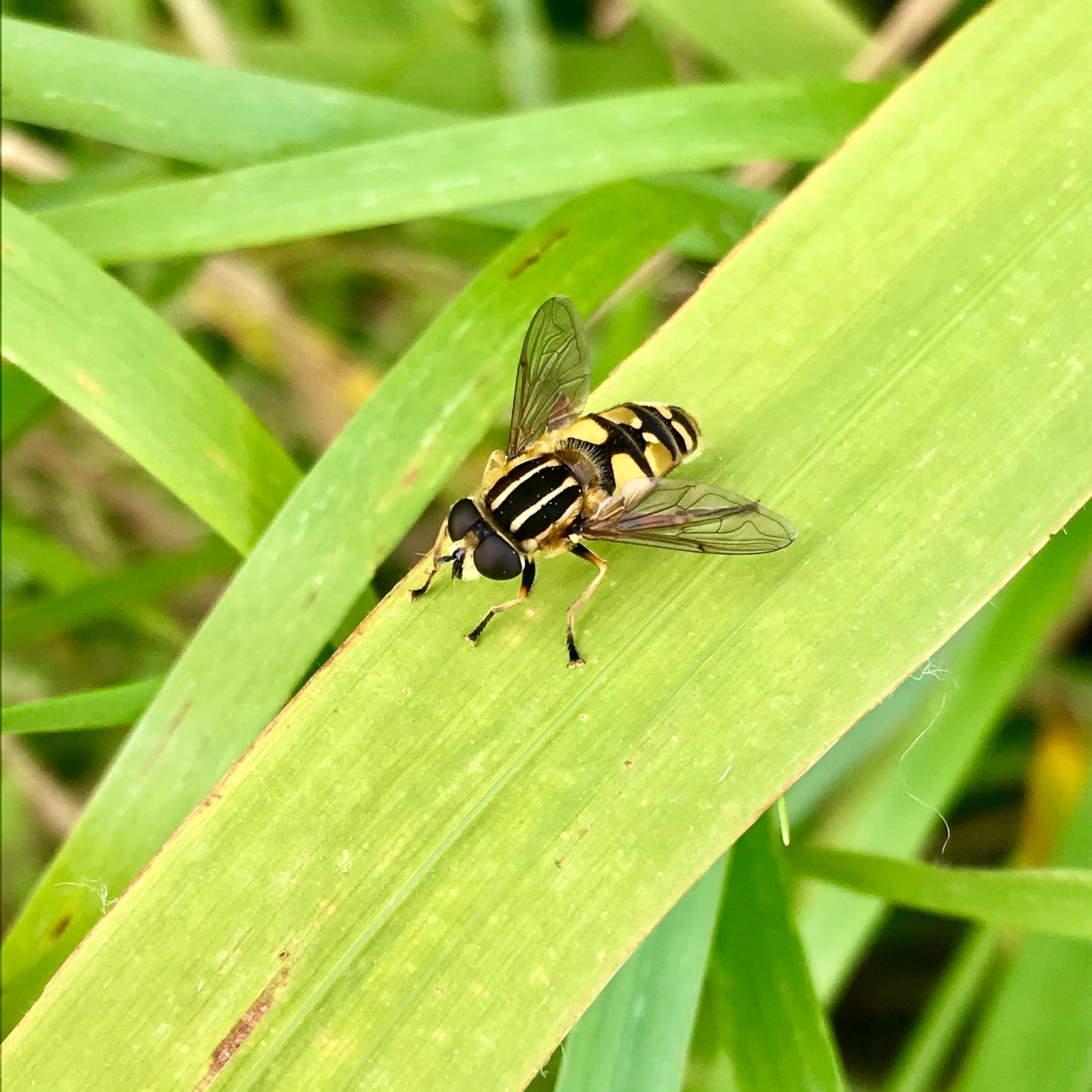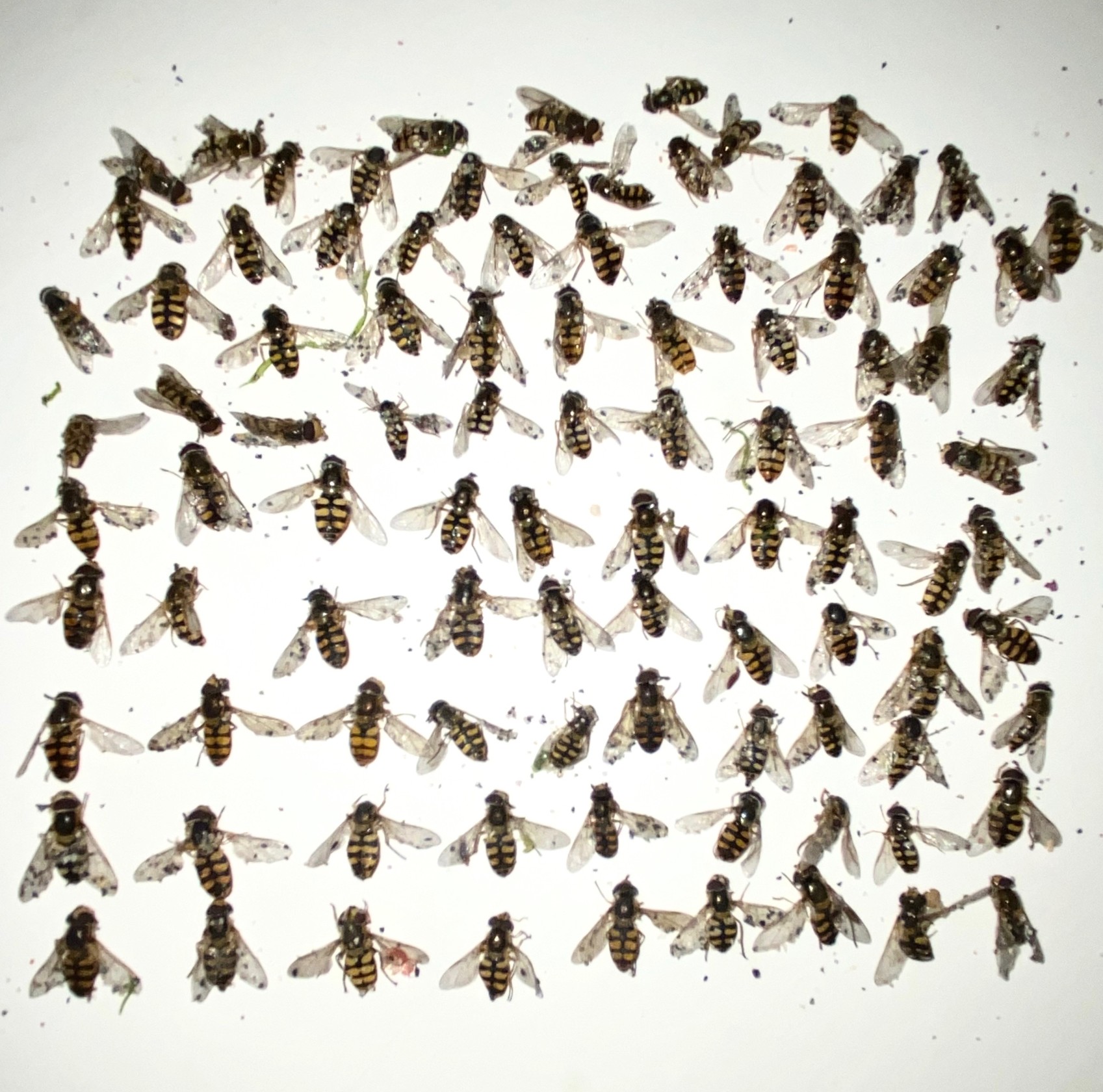Look out for hoverflies
Published: 02 September 2020
With summer drawing to an end, insects will soon start to disappear from roadside verges and our gardens but one group – the hoverflies – will be around for a while yet.
Hoverflies love flowers – most feed on pollen and nectar. Their hovering behaviour is very distinctive. Like minute hummingbirds they hover in one place then quickly dart off, upwards, downwards or sideways to hover somewhere else. Their wings beat at an incredible 250 times per second! Just over 40 species have been found in Shetland – some readily identified by their body pattern. Sexing can be easier than identification, in males the eyes meet over the head but in females they are separated.
Many species look like bumblebees or wasps and these ‘bee mimics’ set out to fool potential predators such as birds. Birds know very well to leave wasps and bees alone as they can give a painful sting so some hoverfly species have evolved the same pattern ensuring that birds will leave them well alone too, for fear of being stung, even though the hoverfly is actually harmless.

This one is a female as the eyes do not meet.

Again, a female as the eyes don't meet.
Hoverflies lay their eggs singly, or in batches of up to several hundred. About five days later the larvae hatch, looking like short, fat maggots. The larvae of some species live in water. Depending on the species concerned, the larvae feed on plant tissue (including sap), scavenge or filter decaying matter (including dung), live in nests of social insects or, are carnivorous feeding largely on aphids. A single larva can eat up to 1200 aphids in a day – something of a gardener’s friend! As they grow, the larvae go through three stages and most spend their winter in the third stage before pupating and hatching out the following spring.

Hoverflies found in the tideline. Photo by Rebecca Nason
The large scale immigrations of hoverflies into Shetland that sometimes occur in fine, warm periods are usually of the aphid-loving species. There was an exceptional immigration earlier this year following southerly winds in late June when hundreds of hoverflies were found along the strandline on beaches, along with migrant ladybirds and Birch Shieldbugs.
There is still much to discover about hoverflies in Shetland and should anyone be interested Rebecca Nason has produced a superb photo-identification guide to the species that occur here. It can be downloaded here (6MB) If you can get a photograph of any hoverflies you see and can’t identify it yourself then by all means send it to the Records Centre and we will try and identify it for you.
Paul Harvey, Natural Heritage Officer
We hope you have enjoyed this blog.  We rely on the generous support of our funders and supporters to continue our work on behalf of Shetland. Everything we do is about caring for Shetland's outstanding natural and cultural heritage on behalf of the community and for future generations. Donations are welcomed and are essential to our work.
We rely on the generous support of our funders and supporters to continue our work on behalf of Shetland. Everything we do is about caring for Shetland's outstanding natural and cultural heritage on behalf of the community and for future generations. Donations are welcomed and are essential to our work.

